Last fall, I was fortunate enough to take a trip to India. International travel has always been a passion of mine, and made a point to visit every continent by the time I was 30. India was my 58th country.
The difference between backpacking through Europe in hostels as a recent post-college grad as opposed to now in my mid 30s as a farmer has provided a new perspective. No longer am I interested in the party scene like I once was; now, more interested in rural areas, connecting with locals, learning their language and how our food is prepared and produced.
On the topic of exploring food and farming, India did not disappoint and was unlike anything I’d ever seen. My friend Misty and I explored spice farms outside of Goa, cotton fields near Jalgaon, Ajanta caves, the countryside by train from Mumbai to the Taj Mahal up to New Delhi. This was our route:
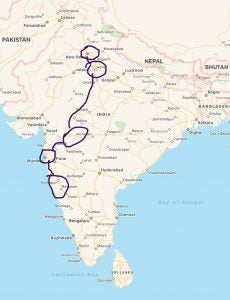
The train rides between some of the major cities were long but so interesting! We stopped and stayed in the smaller town of Jalgaon, where we were able to tour the countryside near the Ajanta caves. It was here where I got to speak with cotton farmers who grow Bt cotton. They were telling me about the benefits of GMO cotton and how they’re able to grow more crop on less land while using fewer pesticides and inputs. It was great to hear this straight from the farmers as there are some internet myths out there on the topic. But just like us, farmers see the benefits of biotechnology so they choose to grow these crops.
In terms of technology, here we have big equipment and embrace change. Americans are always looking for the next best thing — how can we do things bigger and better than before? How can we improve? India is way behind us on this trail of thought, and if you follow my column next week, I’ll be interviewing an engineer from John Deere who will further be explaining this topic and the differences among other countries.
When we encompass equipment technologies, we are able to improve efficiencies, but there it was an entirely different story. It was interesting to see farmers using oxen instead of big tractors, and backpack-type sprayers on foot to control pests. There were many, many workers in the fields, whereas here we are (generally, depending on crop) more automated. There, they can’t seem to cover as much ground so the fields tend to be smaller. The crops grown there are very diverse, and many of them I did not recognize. They tend to be reluctant to change and embrace ag technology.
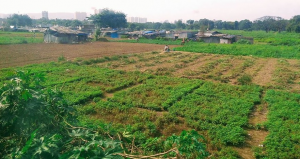
Speaking of unrecognizable diversity, have you ever wondered where your pepper comes from? Yes, salt and pepper we use everyday. Pepper comes from a farm! We toured Sahakari Spice Farm near Goa where they showed us different spice plants like pepper, ginger, cardamom, cloves, vanilla, turmeric, chili powder, curry leaves, etc. Here are some photos from the tour:
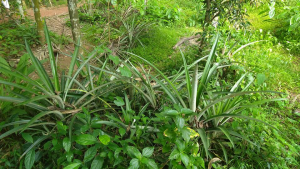
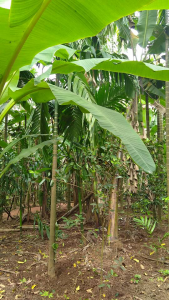
Whiles spice farming is big in India, it was also fun to see the vibrant markets where they sell their work directly to the public. I bought some tea, seasonings, spices to bring home and experiment with cooking. If you’ve been in India, you know how unique and different the food is and how the markets are fun and famous for good reason!
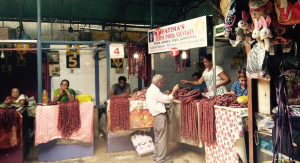
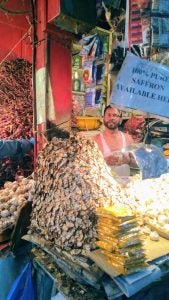
Lastly, let’s not forget the livestock. Cattle are considered sacred by a majority of India’s population and roam the streets freely, eating out of garbage piles as they go. While we have big farms, big buildings and red barns, fancy grain elevators, and an organized governed and mandated system, they may be lucky to just have one hut. We did see one man herding some cattle across the street, which can be viewed here.
Most of the livestock that roam the streets seemed tame. The locals feed them as a sign of good luck (including myself), and it was also pretty fascinating to see cattle strolling on the Goa beaches and pigs or goats randomly walking the streets and rolling through the mud.
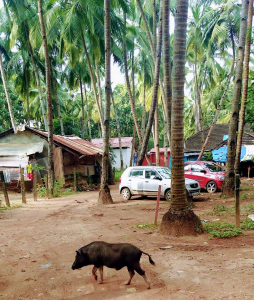
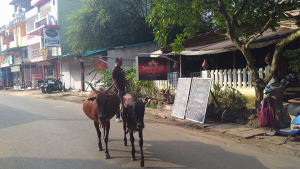
Livestock are also owned for farm labor and their horns may be painted to recognize ownership of the particular animal.
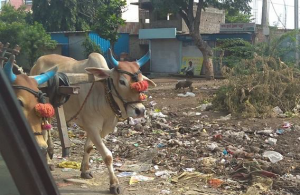
If you’re ever looking for an experience that is extremely different, look no further than India. The country shows extreme cases of poverty and make you appreciate what we have here, yet is home to very friendly people and memories that will change the lens in which we view life.
Michelle Miller, the Farm Babe, is an Iowa-based farmer, public speaker and writer, who lives and works with her boyfriend on their farm which consists of row crops, beef cattle, and sheep. She believes education is key in bridging the gap between farmers and consumers.



